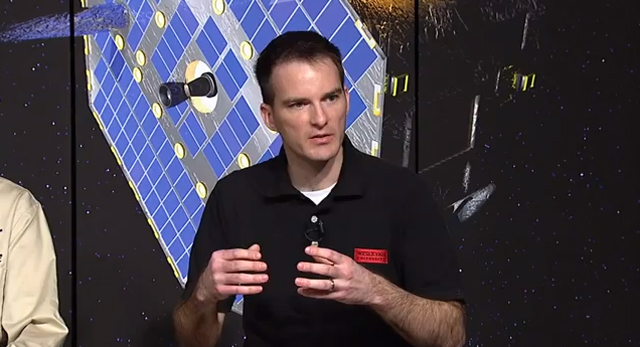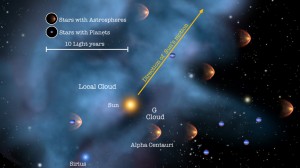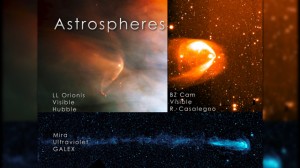Redfield Participates in NASA’s IBEX Mission Press Conference

Seth Redfield had to cut short his first Astronomy 224 class of the 2012 spring semester, but he had a good excuse: he was presenting at an international press conference being held by NASA on one of its recent missions.
Redfield, an assistant professor of astronomy, was chosen by NASA to be a non-mission expert to help verify results from the space agency’s ongoing IBEX (Interstellar Boundary Explorer) mission, an unmanned probe that analyzes the interstellar boundary that protects much of our solar system, including the Earth, from deadly cosmic rays from interstellar space.
One of Redfield’s primary areas of research deals with these types of clouds, more generally known as local interstellar medium (LISM), and his models had been used by NASA in the past, so he was the perfect person to bring in to add an independent perspective to the IBEX press conference. (See video below)
[youtube]http://www.youtube.com/watch?v=cC1qPuCdS9I&noredirect=1[/youtube]
“The interstellar boundary within the heliosphere, the part of space dominated by the sun, acts like a shield,” Redfield says. “It keeps the earth and much of the rest of the solar system protected from highly radio-active particles from us.”
The heliosphere, according to Redfield, is essentially the balance of the outward moving solar wind, which can travel upwards of a million miles per hour, and the compression of the gas and dust within it. It changes with time and our position with regards to the heliosphere and the interstellar boundary is important.
“If our planet slips out of the boundary our protection from galactic cosmic rays becomes much more tenuous,” Redfield says. “Then all we have to rely on is our atmosphere, which is likely not enough to keep much of this radiation from the planet.”

In fact, some have theorized that the earth moving outside of the interstellar boundary may have accounted for mass extinctions in the distant past, though Redfield is quick to point out that no hard evidence has yet been found.
The notable evidence that IBEX did uncover is extensive. First, it helped establish Earth’s relative location within the heliosphere and interstellar boundary, and provided information on Earth’s past and projected future paths through the boundary.
IBEX also provided reference points that can be drawn upon as scientists begin to study similar structures around other stars.
“We are strongly convinced that most if not all stars have a structure similar to our heliosphere, which are called astrospheres,” Redfield says. The more we know about our heliosphere, the more we can learn about astrospheres as we look to other stars and solar systems for, among other things, possible conditions for life.”
IBEX also offered researchers their first up-close look at particles of matter that came from outside our solar system. While theories previous to this analysis had long held that this matter would be substantially the same as the matter within our solar system, the data revealed a stark difference.

“The matter in our solar system contain much more oxygen than these alien particles,” Redfield said. “This surprised everyone. Now we have to find out why our matter is so oxygen rich.”
Redfield’s work has been taken up by several of his students. Greg Malamut ’12, has been studying ISM using time booked on the Hubble Telescope. Graduate student Katie Wyman ’11 has also been doing active research with Redfield on the heliosphere.
The press conference was covered by media from around the world and Redfield’s comments were captured in part in a National Geographic article.
As for his Astronomy 224 class, did he think they minded that he had to truncate their first meeting?
“I think the IBEX press conference really provides an excellent example of the practical applications of this research,” Redfield says. “Several of my students watched it, including from their phones via the NASA app, and were excited to share their impressions. We often discuss recent astronomical discoveries that they read about in the science section of the newspaper, and it was fun to be able to talk to them about it from the other side of the process. ”

